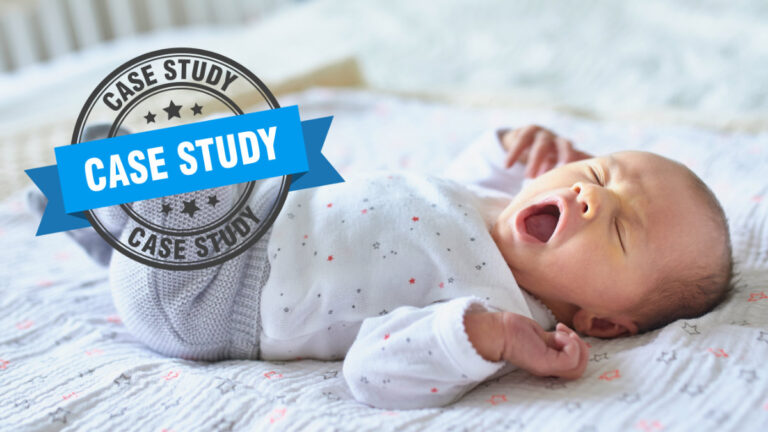Turning Sound Into Insights
Audio Labeling
From speech recognition and natural language processing to audio classification and sentiment analysis, we cover a wide range of audio annotation tasks.
Need Help with Audio Labeling?
When it comes to audio labeling, precise and efficient annotation is essential for training your systems. If you’re building or enhancing a speech recognition model, natural language processing tool, or any other AI-driven audio solution, we can provide expertly labeled data to enhance performance.
Whether you’re working with speech data, environmental sounds, or complex multi-speaker conversations, our team specializes in accurately identifying, segmenting, and classifying audio to meet your specific needs.
We also ensure quality at every step of the process, delivering consistent and reliable data, no matter the volume of audio files. Let us take care of the intricate details, so you can focus on building your models.

Audio Data Annotation for AI Baby Monitor Device
DeeLab labeled audio data for a baby product retailer, enabling the development of an AI-powered baby monitor. This ensured accurate sound detection, a quicker launch, and more reliable performance for parents.
What is Audio Labeling?
Audio labeling is the process of assigning tags or categories to audio recordings. This might include labeling a clip as “speech,” “music,” “dog bark, “baby crying” or “background noise.” It helps machine learning models classify and understand different types of sounds.
What is Audio Annotation?
Audio annotation involves adding more detailed information to specific segments of an audio file. This can include:
Timestamping when a sound occurs
Transcribing speech word-for-word
Identifying speakers (speaker diarization)
Marking sound events (e.g., door slam, baby cry)
Both are critical for training audio AI systems such as virtual assistants, transcription tools, emotion detection, and sound event detection in surveillance or smart home devices.
Learn Audio Labeling!

Audio Labeling Essentials
DeeLab Academy combines theoretical knowledge with hands-on exercises and examples, equipping participants to confidently apply their skills in professional settings.
Use Cases
Audio labeling is crucial in various domains, including speech recognition, voice assistants, sentiment analysis of audio recordings, and audio event detection.
Speech recognition finds uses in virtual assistants, transcription services, customer support, accessibility tools, automotive systems, healthcare documentation, industrial operations, language learning apps, smart home automation, and entertainment applications.
Voice assistance is widely employed in smart speakers, smartphones, wearable devices, connected homes, navigation systems, and automotive interfaces to perform tasks like setting reminders, answering questions, playing music, providing weather updates, controlling smart devices, sending messages, making calls, and offering personalized recommendations.
Sentiment analysis is used in social media monitoring, customer feedback analysis, brand reputation management, market research, and product reviews to gauge public opinion, track customer sentiments, assess brand perception, identify trends, and make data-driven decisions.
Audio event detection is crucial in various applications such as environmental sound monitoring, home security systems, healthcare devices, and industrial settings. It enables the identification of specific audio events like sirens, alarms, footsteps, and machinery noises, contributing to safety, security, and efficient operation.
Techniques
Audio labeling techniques include segmenting audio, transcribing speech, identifying emotions, and labeling specific events or sounds into different categories.
Segmenting audio techniques involve breaking down audio signals into smaller, distinct parts for analysis. This is vital in speech recognition, music analysis, and identifying specific sounds in audio recordings. Methods include energy-based analysis, spectral features, and deep learning, enabling applications like speech transcription, music genre classification, and event detection in audio recordings.
Transcribing spoken words entails converting audio speech into written text. This is essential for various applications like transcription services, content creation, and accessibility. Using speech recognition technology, spoken language is transformed into text format, aiding in tasks such as creating subtitles for videos, generating meeting transcriptions, and enhancing accessibility for the hearing impaired.
Event annotation refers to the process of labeling or annotating data to identify and mark specific events or occurrences of interest within the data. Events can be anything from actions, activities, behaviors, changes, or any significant incident or pattern that takes place in the data. The goal of event annotation is to identify and record these events, making it easier for machines to understand and process the data for various applications.
Challenges
Audio labeling can be challenging due to background noise, speaker variations, and complex audio patterns. Quality control measures are essential to ensure accurate annotations.
Background noise in audio labeling poses challenges like interference, ambiguity, and quality degradation, but these issues can be addressed with noise reduction algorithms, improved recording quality, expert annotators, adaptive guidelines, and automated noise detection.
Speaker variations in audio labeling introduce complexities due to accents, tones, and speech patterns, but these can be managed using diverse annotator teams, accent-specific guidelines, reference audio samples, and continuous training to ensure accurate and consistent annotations.
Dealing with complex audio patterns in labeling requires expert annotators, clear guidelines, and reference samples. This ensures the accurate annotation of intricate sound structures like overlapping speech, multiple sources, or intricate audio events, maintaining the quality and reliability of labeled data.
Labeling Tools
In audio labeling or audio annotation projects, various labeling tools can be used to facilitate the annotation process. Here are some commonly used tools:
Specialized software designed for audio annotation allows annotators to segment audio files, label different types of audio events or speech, and add annotations or tags to specific parts of the audio. Commonly used audio annotation software in audio labeling or audio annotation projects are Praat, ELAN - Linguistic Annotator, Audacity, and Sonic Visualizer.
Waveform editors provide visual representations of audio signals, allowing annotators to visualize and analyze the audio data. These tools, such as WaveSurfer, often have features for precise selection and editing of audio segments.
Transcription tools are used when the annotation task involves transcribing spoken words or converting audio into written text. These tools, such as Google Cloud Speech-to-Text, IBM Watson Speech to Text, Microsoft Azure Speech to Text, Otter.ai, and Descript, often have features to control audio playback, manage timestamps, and generate accurate transcriptions.
Spectrogram analysis tools display the frequency and intensity of audio signals over time, typically in a graphical form. These tools, such as Praat, ELAN - Linguistic Annotator, Audacity, and Sonic Visualizer, are particularly useful for analyzing and labeling specific acoustic features or patterns in the audio data. Python Libraries, such as Librosa, SciPy, and Matplotlib provide functions for computing and visualizing spectrograms, allowing users to analyze audio signals programmatically.
Annotation management platforms, such as Labelbox, CVAT, VGG Image Annotator (VIA), Amazon SageMaker Ground Truth, SuperAnnotate, and Prodigy, provide a centralized system for organizing and managing audio annotation projects. These platforms often include collaboration features, version control, and integration with other data annotation tools.
What's Next?

Discovery Call
We begin by thoroughly understanding your project goals, data requirements, and specific annotation needs. This detailed assessment allows us to tailor our approach precisely to your project’s unique specifications, ensuring accurate and effective results.

Scope Of Work
Our team collaborates closely with you to clearly define the project’s scope, establish realistic timelines, and outline key deliverables. This ensures that every aspect of the project is aligned with your expectations and that we meet your objectives efficiently and effectively.

Proposal
Receive your competitive quote and see how our services stand out. We are committed to demonstrating how we can surpass your current providers in terms of quality and value, ensuring that you get the best results for your investment.
Lend a voice to your AI models with expert audio labeling.

Shall We Have a Call?
The best way to embark on your annotation journey is by scheduling a free Discovery Call with us. In this brief 30-minute session, our experts will understand your project requirements, discuss your goals, and provide tailored guidance on the next steps.
Book your call today
And explore the possibilities of working together! It’s the first step towards unlocking the full potential of your data.
Articles

AI Content Moderation
The internet moves too fast for human-only moderation — and AI systems trained on human-labeled data now play a key role in detecting harmful content. But even with the best annotations, AI can miss context, nuance, and intent.

Audio Data Annotation for AI Baby Monitor Device
DeeLab labeled audio data for a baby product retailer, enabling the development of an AI-powered baby monitor. This ensured accurate sound detection, a quicker launch, and more reliable performance for parents.

Methods of Labeling Audio Data
The need for labeled audio data in AI and ML has grown, making it necessary to use special methods like classification, segmentation, and transcription. These methods play a key role in understanding and interpreting complex layers of sound.

Human-in-the-Loop in Audio Labeling
Human-in-the-Loop (HITL) audio labeling combines AI and human expertise to improve accuracy. AI models label audio, while human annotators correct errors, enhancing training. This cycle boosts efficiency, adaptability, and quality in large-scale projects.

A Closer Look at the Labelbox Audio Labeling Tool
Labelbox is a popular tool designed for labeling data, providing precision and ease for businesses working on algorithm training. It’s convenient to use and performs well overall. Having finished an audio labeling project using Labelbox, we are excited to share our thoughts.

The Role of Audio Annotation in AI Projects
Audio annotation is vital for AI projects, covering phases from understanding goals to quality assurance. DeeLab Academy supports annotators with ongoing training to keep up with new methods and tools.
